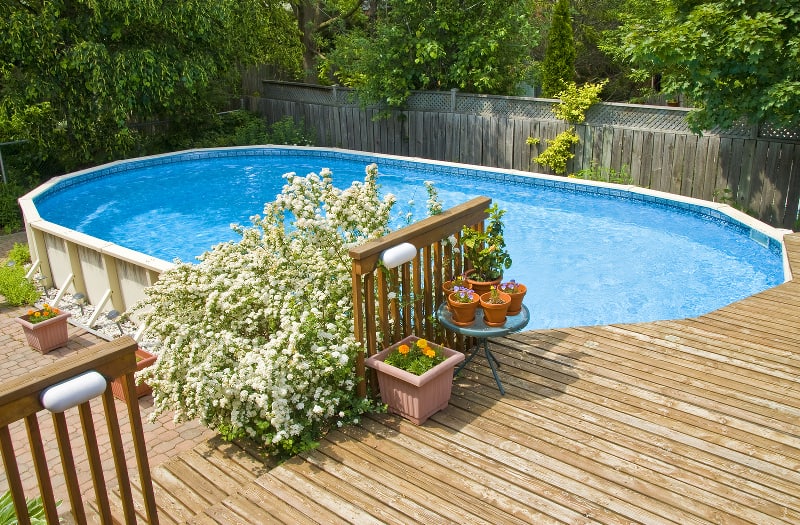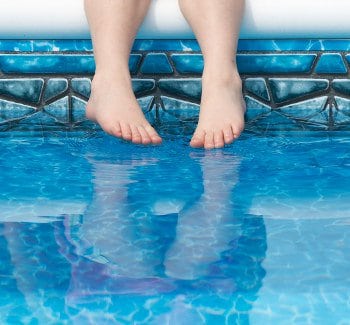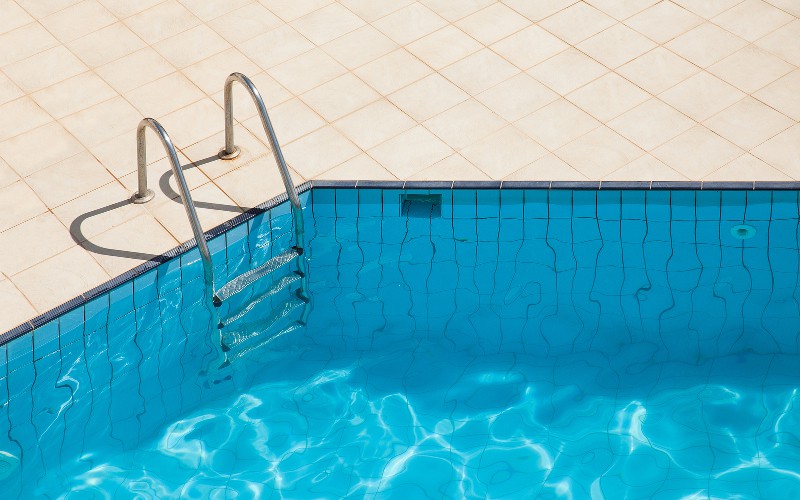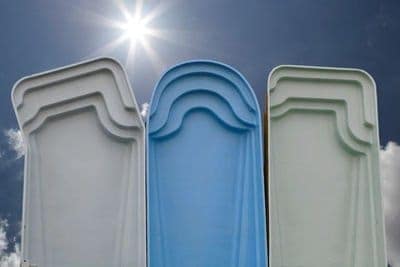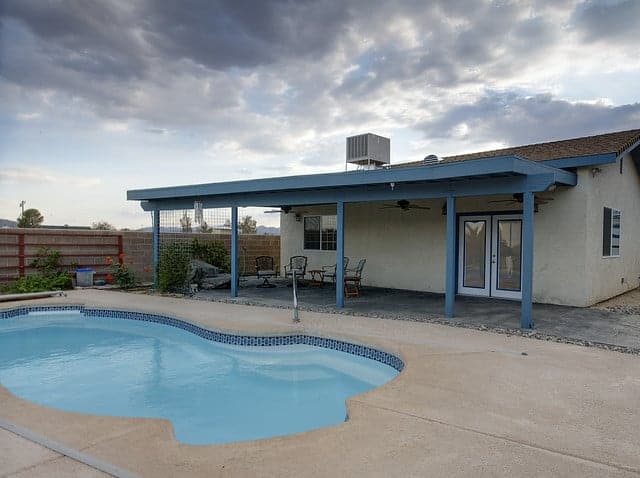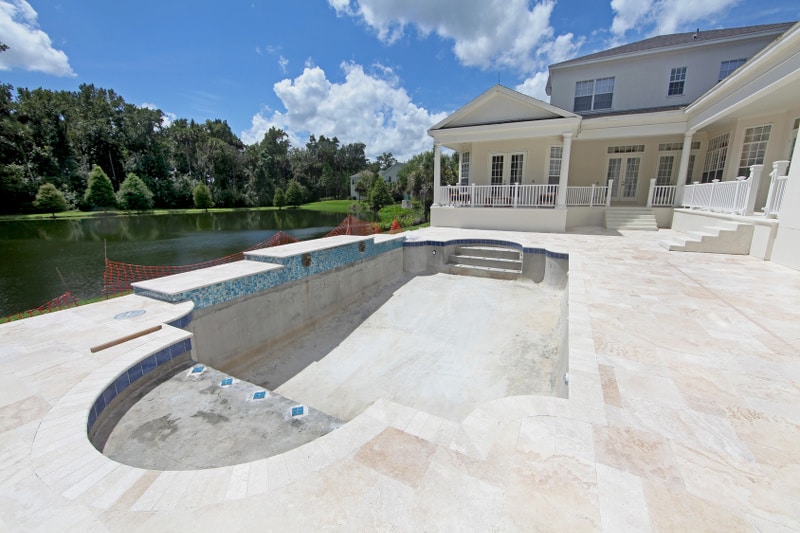
What makes a perfect pool deck? Most people look for qualities like durability, a non-slip surface, and perhaps most important of all, attractiveness. That probably explains why travertine pavers have become such a popular choice – they rate highly in all three categories, while carrying a price tag that fits within the budget of many pool owners.
As a bonus, travertine is known for being easy on the toes. The porous stone doesn’t absorb heat as readily as other deck materials, saving your feet on sizzling hot summer days. In other words, going with travertine is literally one of the coolest ways to build a pool deck.
What is Travertine?
Travertine is a natural rock similar to limestone and marble. It’s been used as a building material since ancient times – in fact, it was the primary material used to build the Coliseum in Rome. In addition to pavers used for outdoor projects, travertine is also commonly used in tile form for indoor floors, walls, and countertops.

Travertine comes in lots of different colors – red, ivory, walnut, and gold, to name a few. When shopping, you may also come across the terms honed and tumbled, which refer to the roughness of the surface. You can also buy filled travertine, in which the cavities are filled with grout.
One last thing to know about travertine is that it comes in three different grades: premium, standard, and commercial. This is based on the size and number of holes in the rock, and the uniformity of its color. As you might expect, you generally pay more for the higher quality grades.
Advantages of Travertine Pavers
Hey, if travertine is good enough for the Coliseum, it’s probably good enough for your backyard swimming pool, amiright? But in case you aren’t totally convinced, here’s a recap of some of the biggest selling points of travertine pavers:
Attractive. Travertine pavers look classy and combine nicely with both modern and naturalistic pool designs.
Non-Slip Surface. Travertine naturally absorbs water, so there’s less pooling on the surface for people to slip on.
Easily Repaired. If pavers get damaged or otherwise need to be replaced, you can just pull them up as required. They’re known for holding their color over time, making it easier to match replacement stone.
Heat Resistant. As mentioned, travertine is famous for not getting too hot when the sun is shining on it.
Affordable. Travertine pavers cost more than concrete, but are affordable compared to other types of cut stone (more on travertine cost below).
But what about the negatives? Well, the main one is that travertine might not be the best choice for colder climates. As noted, it absorbs water. Unfortunately, water expands when it freezes, which over time could cause shifting or damage to the stone. With fewer holes, higher grade travertine has a better chance of holding up under cold weather conditions.
How Much Does a Travertine Pool Deck Cost?
Until recently, most travertine was imported from Italy and was relatively expensive. However, in recent years, the U.S. has started importing more travertine from Turkey and other countries, and the price has dropped accordingly. No doubt, the lower cost has contributed to travertine’s rising popularity as a pool deck material.
As with all aspects of pool design, the exact cost of travertine paver installation depends on various factors, including your location. However, a “typical” price for travertine pavers might fall in the range of $13-16 per square foot. Because installing pavers is a labor-intensive project, you can save a lot by doing it yourself (provided you have the knowhow, of course).
Given how much time you spend on your pool deck, it’s easy to justify spending a little extra for high-grade travertine pavers. If you’ve got room in your budget, you probably won’t regret the upgrade – and neither will your feet.

